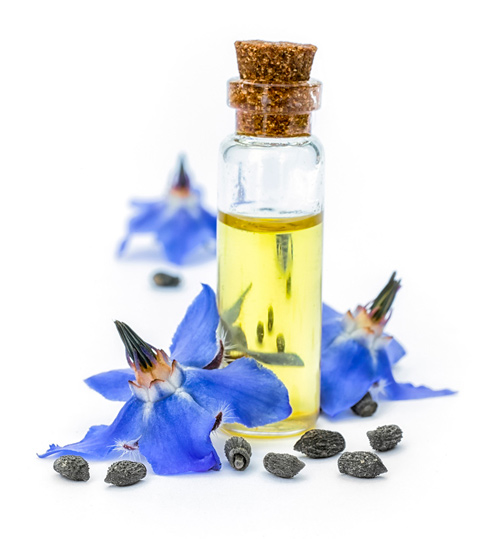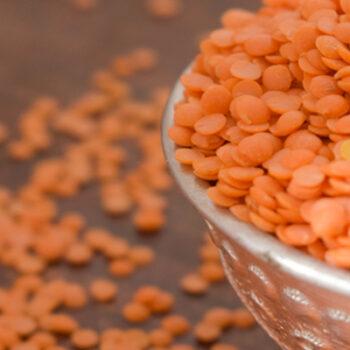
GLA AMONG OMEGA-6

POLYUNSATURATED FATTY ACIDS
The composition of the cell membrane reflects the result of two factors related to the individual: diet and metabolism. Just by looking at this composition, it becomes clear that special attention should be paid to the choice of fats in foods and also to assessing their transformation in the body, especially keeping in mind the indispensable role played by polyunsaturated fatty acids (PUFAs), omega-6 and omega-3, as structural and functional elements of the cell membrane.
The omega-3 PUFA family, whose best-known molecules are EPA and DHA, are long-chain fatty acids that participate in membrane fluidity, especially of the membrane of cells in the nervous system and retina (for more on omega-3 DHA) and are precursors of molecules with signalling activity, the most important of which is anti-inflammatory.
PRO-INFLAMMATORY OMEGA-6?
In signaling activity, on the other hand, omega-6 PUFAs, unlike omega-3s, have a “negative reputation, namely being pro-inflammatory.” Arachidonic acid is the best known of the omega-6 polyunsaturates, producing signal molecules to direct our body’s reactivity in an inflammatory direction.
Omega-6 fats are considered “inflammatory” par excellence, but this meaning is incorrect and this “bad reputation” is challenged precisely by scientific knowledge and evidence, perhaps not known to all, but widely shared by those in the field:
- 1- First of all, it should be remembered that among omega-6 PUFAs there is dihomo-gamma-linolenic acid DGLA, which is one of the molecules formed in the “enzymatic cascade”: linoleic acid (found in foods) → gamma-linolenic acid → DGLA → arachidonic acid (more on this at www.lipinutragen.it/en/dgla-at-the-crossroads-of-pro-and-anti-inflammatory-processes). As soon as DGLA is formed-rather than turning all into arachidonic acid-it is more rapidly transformed into series 1 prostaglandins, important signal molecules for anti-inflammatory processes and immune activation;
- A second point is that inflammation, generated by the transformation of arachidonic into its signal molecules, series 2 prostaglandins, does not arise as a harmful process in itself, but is our body’s physiological response to attack and ward off a problem. However, in order to have an optimal inflammatory process, it must evolve over time, indeed in a short time it must be able to extinguish itself (i.e., “resolve”), and to achieve this it must give way to other signal molecules (either from omega-3 or from DGLA) that intervene immediately afterwards with anti-inflammatory activity; the balance also applies reciprocally, i.e., even the presence of omega-3 cannot be in excess of omega-6, precisely so as not to cancel out its reactive and defensive signals.
The omega-6 and omega-3 families, in addition to sharing the characteristic of essentiality, that is, having to introduce their precursors necessarily through the diet, because the human body is unable to self-produce them, also share the “enzymatic machinery” to carry out the metabolic transformations that “cascade” from the precursors to the components of the two families.
This means that starting with the diet, foods containing omega-6 and omega-3 must be introduced equivalently, without excesses of either family, because this ensures the presence of all PUFA molecules for structural and functional membrane balance, including pro- and anti-inflammatory balancing (2).
GAMMA-LINOLENIC FATTY ACID, OMEGA-6

Dihomo-gamma-linolenic acid (DGLA)
In the omega-6 family we find gamma-linolenic acid (GLA), a semi-essential fatty acid, which is derived from its essential precursor, linoleic acid (LA).
From GLA, in turn, dihomo-gamma-linolenic acid (DGLA) is formed enzymatically.
The biological activities of GLA and DGLA are well documented in the scientific literature and involve anti-inflammatory and regulatory properties:
-
- DGLA competes with arachidonic acid for COX and LOX enzymes (which convert into prostaglandins and other signal molecules of the inflammatory process);
- DGLA is a precursor of prostaglandin series-1, with anti-inflammatory, anti-aggregatory and vase-dilatory activity;
- GLA and DGLA, transformed into their oxygenated metabolites, have various effects, such as increasing cyclic AMP levels and enhancing mitochondrial activity, as well as interacting with various receptors, supporting the activities of immune cells, mucosal cells (intestinal, gastric, and genital apparatus) and smooth muscle, and other metabolic activities. Finally, by acting as regulators of apoptosis and vascularization, they are very important in the management of the tumour process.
Additional positive effects are clinically found such as increased defences, improvement of gastro-intestinal issues, reduction of menstrual discomfort, and hydration and elasticity of the skin.
It should be emphasized that in all these evaluations, there is always the caveat of assessing the presence of natural and non-natural fatty acids, such as saturated fats and trans fats, in the same formulation that contains PUFA fatty acids. In fact, if you want to get to specific effect supported by PUFAs, you have to be sure to have them as main components, while saturated and trans fats constitute undesirable components that interfere with the main biological activity.
LiGLA: THE FIRST GLA-BASED SUPPLEMENT IN EMULSION
The enzymatic transformations of linoleic acid into GLA and then into DGLA are not always fast and efficient; in some cases they may not perform well, such as in certain pathological conditions (hypertension, arthritis, diabetes, and psoriasis) or related to bad habits or nutrition (alcohol use, stress, smoking, diets deficient in vitamins and minerals).
Intake from food sources (or supplements) turns out to be a valuable solution to deficits or deficiencies. Please note that fatty acid deficiencies or deficiencies can nowadays be analyzed, thanks to membrane lipidomic analysis (analysis processed in our Laboratory with the only accredited method with robotic procedure), so that symptoms simply due to essential fatty acid deficiency are not mistaken as pathology.
 NUTRITION SOURCES OF GLA
NUTRITION SOURCES OF GLA
There are no naturally available sources of DGLA, while there are some (not many) natural sources of GLA such as borage, evening primrose and blackcurrant oils (with varying concentrations of GLA), which can be used in nutraceutical products.
Lipinutragen has studied LiGLA, a supplement in liquid emulsion form based on borage oil with 20 percent GLA, along with antioxidants, alpha-lipoic acid, and sunflower lecithin.
THE DISTINCTIVE FEATURES OF LiGLA
Borage seed oil selected as raw material has the highest concentration of GLA on the market, i.e., 20 percent, and has a very low saturated fatty acid content and no trans fatty acids.
The formulation in the presence of lecithin allows GLA to be absorbed more easily (higher bioavailability for microparticles), distributing itself in an effective and protected manner, thanks to the presence of the antioxidants (Vitamin C, Vitamin E and lipoic acid).
After absorption and biodistribution in the cells of various tissues, GLA fatty acid enters the omega-6 family metabolism and cascade to be transformed into DGLA. Polyunsaturated fatty acids, including DGLA, are then used to biosynthesize phospholipids and, as such, are incorporated into cell membranes. And right here we read the final balance between omega-6 and omega-3 with the presence of DGLA being very important for the fine regulation of pro- and anti-inflammatory signaling in a natural way.
Bibliography:
- Membrana cellulare e lipidomica. Carla Ferreri e Chryssostomos Chatgilialoglu. 2014, CNR Edizioni
- Harayama et Riezman. Understanding the Diversity of Membrane Lipid Composition. Rev Mol. Cell Biol. 19:281-296, 2018.
- Kapoor R, et al. Gamma Linolenic Acid: An anti-inflammatory omega-6 fatty acid (Review) Curr Pharm Biotech 7:531-34, 2006.
- Burdge G, et al. Alpha linolenic metabolism in adult humans. Eur J Lipid Sci Tech 107:426-39, 205, 2005.
- Das UN. Essential fatty acids and their metabolites could function as endogenous HMG-CoA reductase and ACE enzyme inhibitors, anti-arrhythmic, anti-hypertensive, anti-atherosclerotic, anti-inflammatory, cytoprotective, and cardioprotective molecules. Lipids Health Dis. 2008 Oct 15;7:37.
- Wang X, Lin H, Gu Y. Multiple roles of dihomo-γ-linolenic acid against proliferation diseases. Lipids Health Dis. 2012 Feb 14;11:25.
EFSA CLAIM:
EFSA Panel on Dietetic Products, Nutrition and Allergies (NDA); Scientific Opinion on the substantiation of health claims related to gamma-linolenic acid (GLA) … pursuant to Article 13(1) of Regulation (EC) No 1924/2006. EFSA Journal 2011; 9(4):2059. [27 pp.]. doi:10.2903/j.efsa.2011.2059.
CLINICAL TRIALS:
- Wu D, et al. Effect of dietary supplementation with black currant seed oil on the immune response of healthy elderly subjects. Am J Clin Nutr 70: 536-543, 1999
- Zurier RB, et al. Gamma-linolenic acid treatment of rheumatoid arthritis. A randomized, placebo-controlled trial. Arthritis Rheum39:1808-17, 1996.
- Keen H, et al. Treatment of diabetic neuropathy with gamma-linolenic acid. The gamma-Linolenic Acid Multicenter Trial Group. Diabetes Care 16:8-15, 1993.
- Physicians’ Desk Reference for Nutritional Supplements, 1st Edition, ISBN 1-56363-364-7, p. 173.
- Chilton-Lopez T, et al. Metabolism of GLA in human neutrophils. J Immunol 156:2941-47, 1996.
- Johnson M, et al. Dietary supplementation with GLA alters fatty acid content and eicosanoid production in healthy humans. J Nutr 127:1435-44, 1997.
- Ziboh VA, et al. Dose-response effects of dietary GLA-enriched oils on human polymorphonuclear-neutrophil biosynthesis of leukotriene B4. Am J Clin Nutr 55:39-45, 1992.
- Barham JB, et al. Addition of eicosapentaenoic acid to gamma-linolenic acid-supplemented diets prevents serum arachidonic acid accumulation in humans. J Nutr 130:1925-31, 2000.
- Laidlaw M, et al. Effects of supplementation with fish oil-derived n-3 fatty acids and gamma-linolenic acid on circulating plasma lipid profiles in women. Am J Clin Nutr 77:37-42, 2003.
- Wang C, et al. n-3 Fatty acids from fish or fish-oil supplements, but not alpha-linolenic acid, benefit cardiovascular disease outcomes in primary- and secondary-prevention studies: a systematic review. Am J of Clin Nutr 84:5-17, 2006.
Article by the Lipinutragen Editorial Team
The information reported should in no way replace the direct relationship between health professional and patient.
Photo: 123RF Archivio Fotografico: 162388984 : ©denisfilm | 121975769 : ©vainillaychile
- On 1 February 2024


